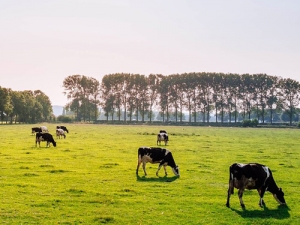Wired for Science: Understanding the feeding habits of mealybug
Fussy children might be frustrating, but fussy mealybugs could help protect the New Zealand wine industry from grapevine leafroll-associated virus 3.
 Research into improving phosphorus recovery and overall use efficiency remains urgent in the face ongoing and future supply and price volatility.
Research into improving phosphorus recovery and overall use efficiency remains urgent in the face ongoing and future supply and price volatility.
Research into improving phosphorus recovery and overall use efficiency remains urgent in the face ongoing and future supply and price volatility.
So says Lincoln University Professor of Biogeochemistry Leo Condron.
His work on recovering and recycling existing phosphorus addresses worldwide concern that finite reserves of readily accessible but non-renewable phosphate rock are being steadily exhausted as demand continues to increase.
He believes efforts to improve phosphorus use efficiency and recycling of phosphorus in waste will potentially benefit both phosphorus rich and phosphorus poor parts of the world.
Phosphorus fertiliser use has been concentrated in Europe, North America, India, China and parts of South America and Australasia, and consequent elevated levels of phosphorus in soil have contributed to declining water quality in many areas related to accelerated eutrophication.
On the other hand, large areas of Africa, Asia and South and Central America have had limited access to phosphorus fertilisers, and it is widely acknowledged that significant inputs of phosphorus and other nutrients are required to increase food production to meet ever increasing demand.
Only 10-50 percent of phosphorus applied as fertiliser is taken up by plants and removed in produce, while the rest remains in the soil. Professor Condron says mobilising this "legacy" phosphorus in soil could be achieved using new and novel combinations of plants and associated microbes in agricultural systems.
However this could have mixed results. While it may enhance plant uptake and reduce fertiliser requirement, it could also increase the risk of phosphorus loss in drainage. At least part of the increased pressure on phosphorus resources could also be alleviated by improved utilisation of fertiliser phosphorus and recycling of phosphorus contained in various agricultural and urban waste streams.
Prior to 2007 the price of phosphorus was relatively stable, but by 2008 the cost had increased four-fold due to a combination of factors related to supply and demand, and while the price has subsequently decreased it remains relatively high. This spike led to an urgent reassessment of phosphate rock reserves, and while some initial evaluations indicted that demand could exceed supply by 2030 (peak phosphorus), this has since been extended by at least 100 years.
Although phosphorus is found in many parts of the world, prior to the price increase it was not economic to mine many of the reserves. Professor Condron says that peak phosphorus won't happen anytime soon if new reserves are mined, but global supply and price are likely to be determined by the actions of Morocco, who control over 50 percent of known phosphate rock reserves.
Phosphorus plays an essential role in agriculture and global food production. Fertiliser was first made from phosphate rock in the mid-nineteenth century, and contributed to dramatic increases in crop productivity. The amounts of phosphorus in managed agricultural systems has changed significantly since then, with the benefits unevenly distributed around the world.
Retiring Fonterra director Andy Macfarlane believes the co-operative has made good progress over the past decade but adds that there's still a way to go.
Visiting US climate change expert Dr Will Happer says the idea of reducing cow numbers to greatly reduce methane emissions is crazy.
Federated Farmers has launched a new campaign, swapping "The Twelve Days of Christmas" for "The Twelve Pests of Christmas" in an effort to highlight the most troublesome farm pests.
The Rapid Relief Team (RRT) has given farmers in the Tararua District a boost as they rebuild following recent storms.
The Government is set to announce two new acts to replace the contentious Resource Management Act (RMA) with the Prime Minister hinting that consents required by farmers could reduce by 46%.
Prime Minister Christopher Luxon says withdrawing from the Paris Agreement on climate change would be “a really dumb move”.

OPINION: Your old mate welcomes the proposed changes to local government but notes it drew responses that ranged from the reasonable…
OPINION: A press release from the oxygen thieves running the hot air symposium on climate change, known as COP30, grabbed your…